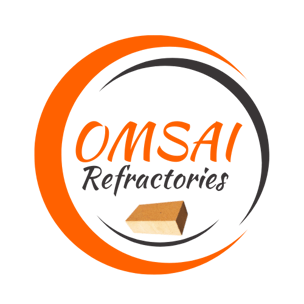Contact Now : +91-9979991304 +91-7069898399
E-mail : info@omsairefractories.com / omsairefractories@gmail.com
AN ISO 9001:2015 & CE CERTIFIED COMPANY
A Comprehensive Guide to Refractory Materials
2/14/20242 min read


When it comes to industries that deal with high temperatures, refractory materials play a crucial role in ensuring the durability and efficiency of various equipment and structures. From firebricks to insulation bricks, there are different types of refractory materials available to suit different applications. In this guide, we will explore some of the most commonly used refractory materials and their uses.
1. Firebricks
Firebricks, also known as refractory bricks, are specially designed to withstand high temperatures. These bricks are made from a combination of clay and other materials, which give them excellent thermal resistance. Firebricks are commonly used in kilns, furnaces, and fireplaces.
2. Refractory Castables
Refractory castables are mixtures of refractory aggregates, binders, and additives. They are available in a liquid or powder form, which can be easily poured or cast into various shapes. Refractory castables are used to create monolithic linings in furnaces, boilers, and other high-temperature applications.
3. Mortar
Refractory mortar is a type of cement used to bind refractory bricks together. It has excellent heat resistance and can withstand high temperatures. Refractory mortar is commonly used in bricklaying applications, such as constructing chimneys and kilns.
4. Insulation Bricks
Insulation bricks are lightweight refractory bricks that have low thermal conductivity. They are used to line the walls of furnaces, kilns, and other high-temperature equipment to reduce heat loss. Insulation bricks help improve energy efficiency and reduce operating costs.
5. Refractory Crushed Bed Materials
Refractory crushed bed materials are granular refractory materials used in fluidized bed boilers and other similar applications. They provide a stable and uniform bed for combustion, ensuring efficient heat transfer and combustion control.
6. High Alumina Bricks
High alumina bricks are made from high-purity alumina and other additives. They have excellent resistance to thermal shock and chemical corrosion, making them suitable for applications that involve rapid temperature changes and harsh chemical environments.
7. Special Shaped Bricks
Special shaped bricks are refractory bricks that are custom-made to fit specific shapes and dimensions. They are used in complex furnace linings and other applications where standard bricks cannot provide a proper fit.
8. Cupola Brick
Cupola bricks are refractory bricks used in cupola furnaces, which are used for melting iron and other metals. These bricks have excellent resistance to high temperatures and mechanical wear, ensuring the longevity of the furnace.
9. Calcium Silicate Block
Calcium silicate blocks are lightweight refractory materials used for insulation purposes. They have low thermal conductivity and high compressive strength, making them ideal for applications that require both insulation and structural support.
10. Standard Bricks
Standard bricks are commonly used refractory bricks with a wide range of applications. They are made from a mixture of clay and other materials and offer good thermal resistance. Standard bricks are used in various industries, including steel, cement, and glass.
Whether you need to line a furnace, construct a kiln, or build a fireplace, choosing the right refractory materials is essential. By understanding the different types of refractory materials available and their specific uses, you can ensure the longevity and efficiency of your high-temperature equipment.
E-mail : omsairefractories@gmail.com
Contact us
(+91) 7069898399, 9979991304
Mr. Jayesh Parmar
Om Sai Refractories
Village-Chandrapur, Wankaner-363621
Dist-Morbi, Gujarat, India.
Subscribe to our newsletter
E-mail : info@omsairefractories.com
